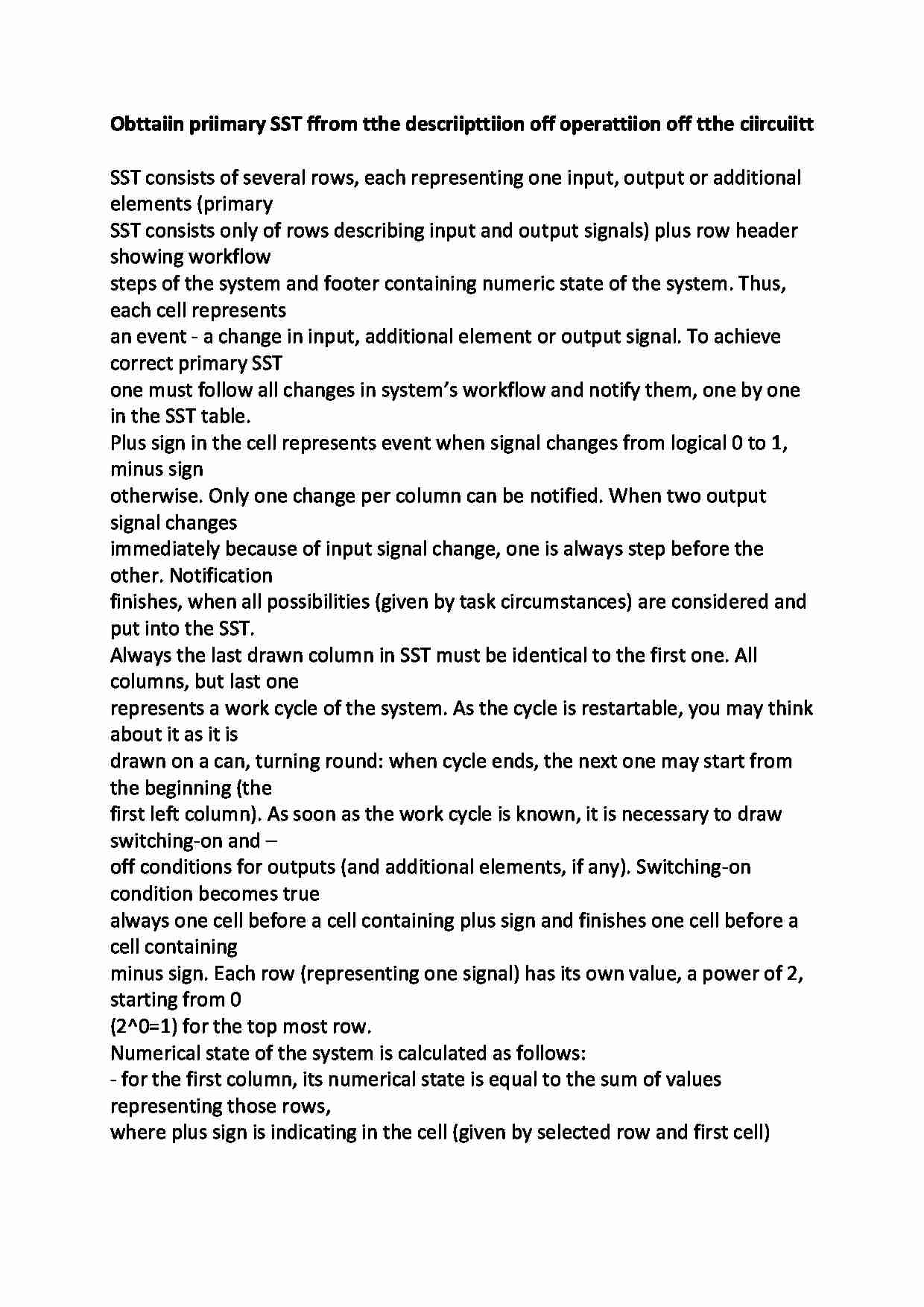To tylko jedna z 2 stron tej notatki. Zaloguj się aby zobaczyć ten dokument.
Zobacz
całą notatkę


Obttaiin priimary SST ffrom tthe descriipttiion off operattiion off tthe ciircuiitt SST consists of several rows, each representing one input, output or additional elements (primary
SST consists only of rows describing input and output signals) plus row header showing workflow
steps of the system and footer containing numeric state of the system. Thus, each cell represents
an event - a change in input, additional element or output signal. To achieve correct primary SST
one must follow all changes in system's workflow and notify them, one by one in the SST table.
Plus sign in the cell represents event when signal changes from logical 0 to 1, minus sign
otherwise. Only one change per column can be notified. When two output signal changes
immediately because of input signal change, one is always step before the other. Notification
finishes, when all possibilities (given by task circumstances) are considered and put into the SST.
Always the last drawn column in SST must be identical to the first one. All columns, but last one
represents a work cycle of the system. As the cycle is restartable, you may think about it as it is
drawn on a can, turning round: when cycle ends, the next one may start from the beginning (the
first left column). As soon as the work cycle is known, it is necessary to draw switching-on and -
off conditions for outputs (and additional elements, if any). Switching-on condition becomes true
always one cell before a cell containing plus sign and finishes one cell before a cell containing
minus sign. Each row (representing one signal) has its own value, a power of 2, starting from 0
(2^0=1) for the top most row.
Numerical state of the system is calculated as follows:
- for the first column, its numerical state is equal to the sum of values representing those rows,
where plus sign is indicating in the cell (given by selected row and first cell)
- for all the next columns, numerical state is obtained as a numerical state from the proceeding
column and a change (event) in the considered column
- when plus sign, one adds a value representing the signal changing,
- when minus sign, one subtracts this value.
Let's consider sample SST obtaining process, based on the time diagram description (a, b -
inputs; x, y - outputs):
Analysis have to be done starting from the left of the diagram, notifying any change in input,
output and additional elements. Notice, that an input signal causes output/additional element to
change, never different. Only one signal changes at a single step. In the case above, first rising
up of b signal causes change of x, (as b is input, x is output). Analyzing step by step each change
... zobacz całą notatkę




Komentarze użytkowników (0)